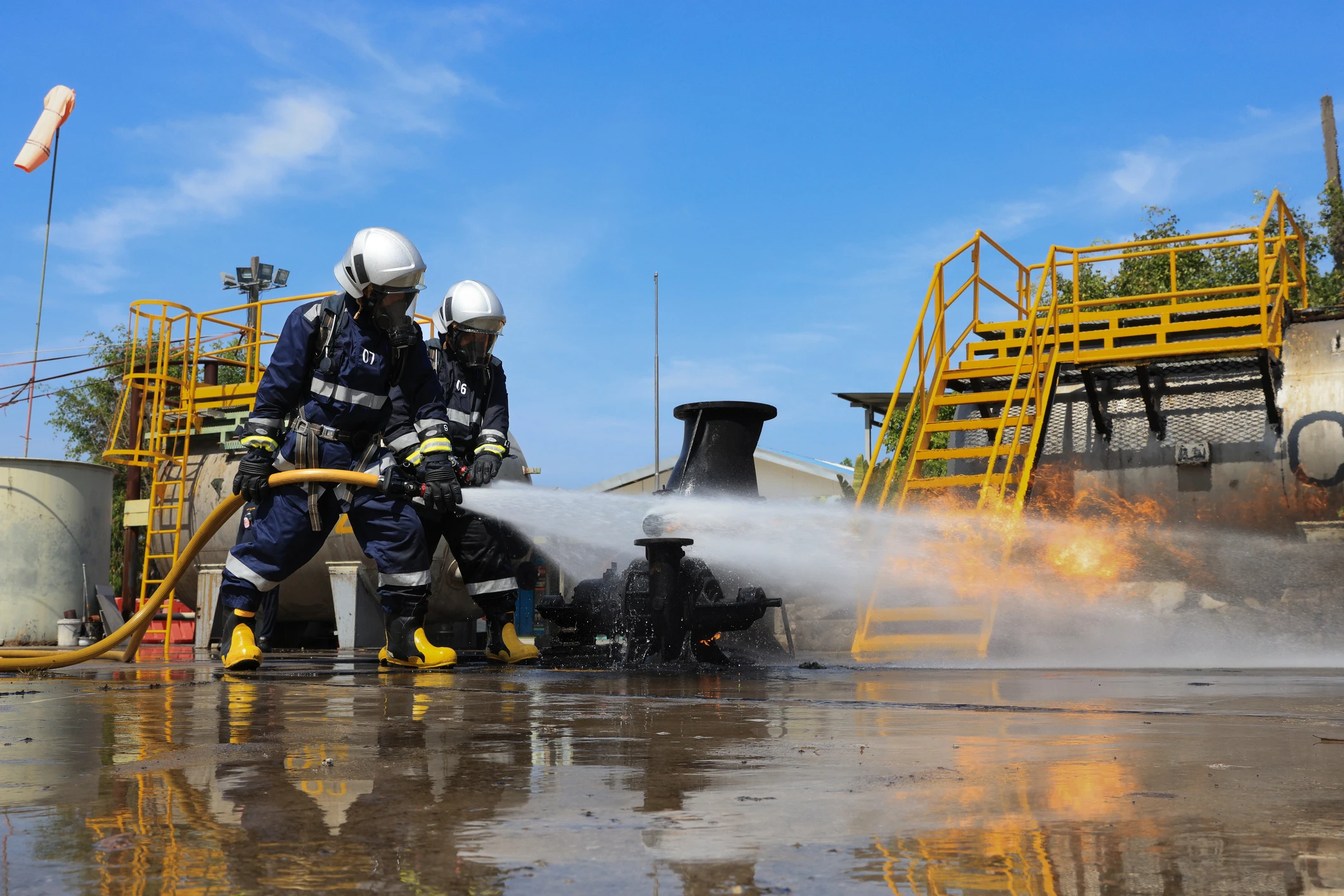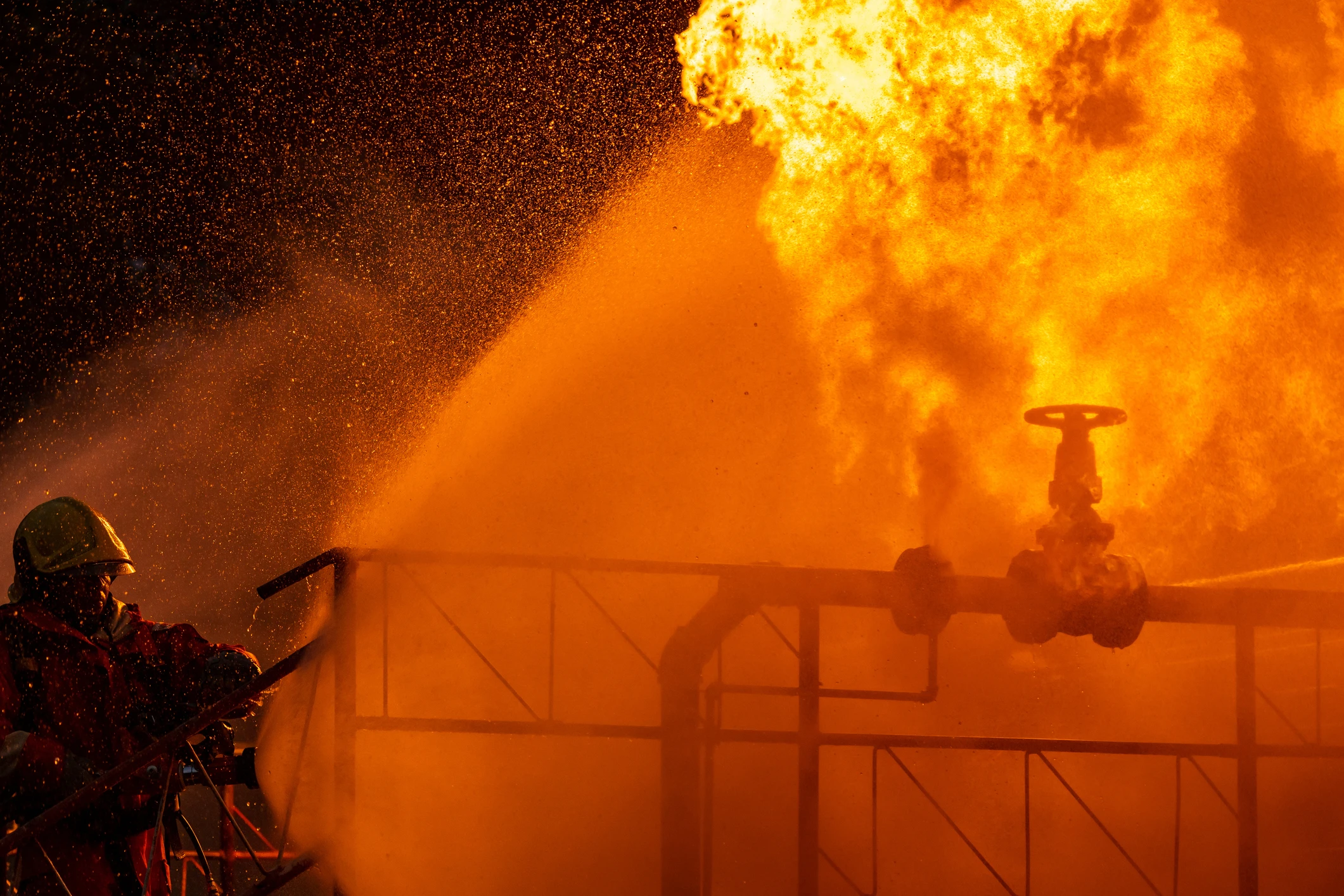

Industrial firefighting training simulators are highly valuable tools for preparing emergency responders to handle various scenarios in industrial settings. These simulators typically replicate realistic firefighting environments and challenges, providing trainees with hands-on experience in a safe and controlled setting. Here are some key features and benefits of industrial firefighting training simulators fabricated by Blue Ops.
- Realistic Scenarios: Simulators can recreate a wide range of industrial fire scenarios, including chemical spills, oil refinery fires, electrical fires, and more. This allows trainees to practice responding to different types of emergencies they may encounter in industrial settings.
- Safety: By using Blue Ops simulators, trainees can learn and make mistakes without putting themselves or others in danger in a controlled environment. Blue Ops simulators are designed to mimic real-life conditions in a fully controlled and safe environment without the actual risks associated with real incidents.
- Equipment Familiarization: Trainees can become familiar with various firefighting equipment, such as fire hoses, extinguishers, breathing apparatus, and specialized gear used in industrial firefighting. They learn how to operate this equipment effectively in different situations.
- Decision-making Skills: Simulators challenge trainees to make quick and effective decisions under pressure. They must assess the situation, prioritize tasks, and coordinate with team members to control and extinguish fires safely.
- Repeatable Training: Simulators offer the advantage of repeatable training scenarios. Trainees can practice the same scenario multiple times to improve their skills, reinforce learning, and adapt their strategies based on feedback and experience.
- Environmental Control: Simulators can simulate various environmental factors, such as smoke, heat, and noise, to create a more immersive and challenging training experience. This helps prepare firefighters for the sensory aspects of real emergencies.
- Performance Evaluation: Simulators often include performance tracking and evaluation systems. Instructors can monitor trainee progress, identify areas for improvement, and provide targeted feedback to enhance learning outcomes.
- Cost-Effective: While initial setup costs for simulators can be significant, they are generally more cost-effective in the long run compared to live-fire training exercises, which require extensive safety measures, resources, and environmental considerations e.g. cleanup.
- Accessibility: Industrial firefighting training simulators can be set up in dedicated training facilities or mobile units, making them accessible to a wide range of emergency response teams, including industrial firefighters, municipal fire departments, and private organizations.
Overall, industrial firefighting training simulators play a crucial role in preparing
emergency responders to effectively mitigate and manage industrial fires, ensuring the
safety of personnel, property, and the environment.

Contact us
for your live fire training needs!
